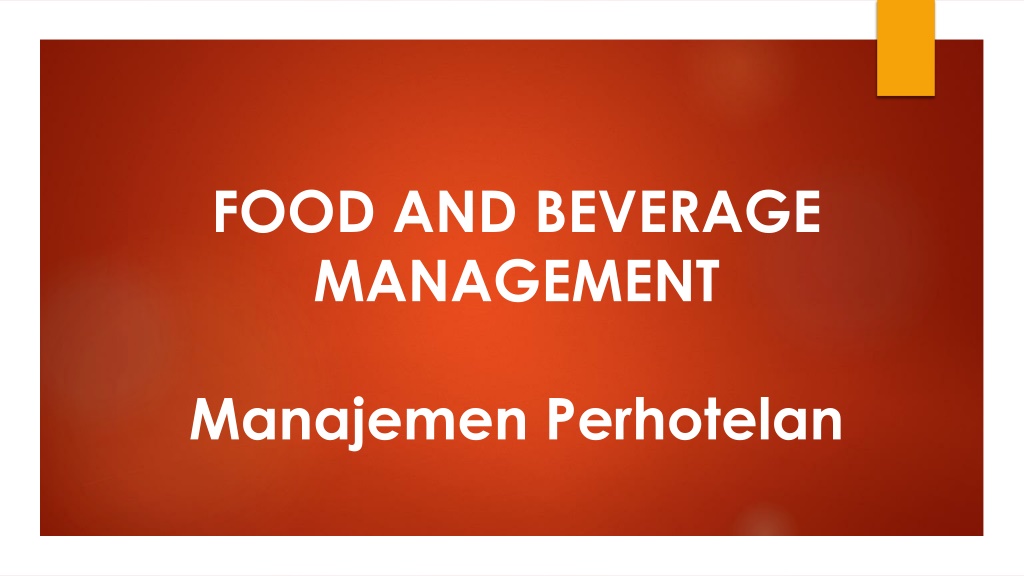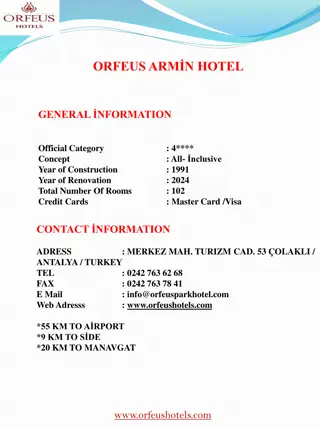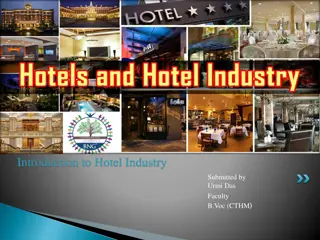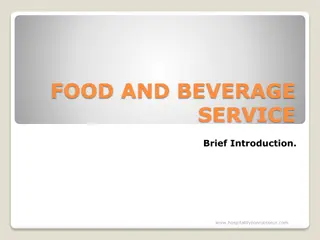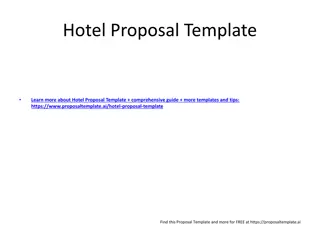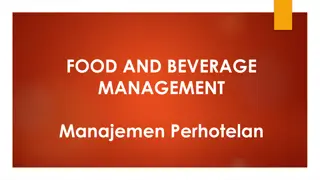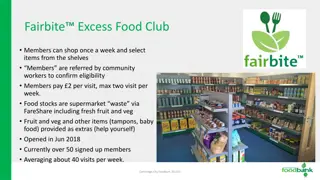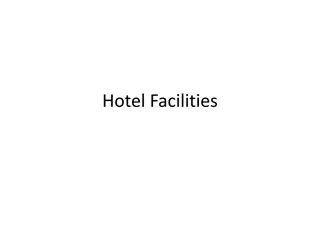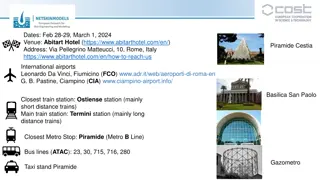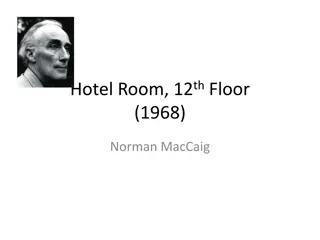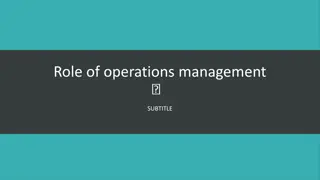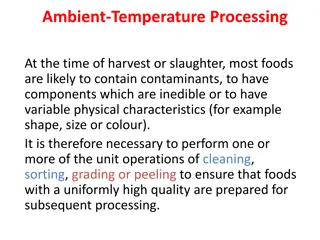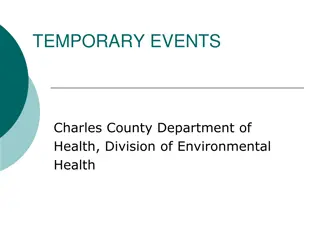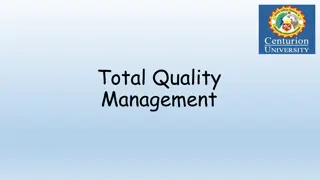Food and Beverage Management in Hotel Operations
Managing food and beverage operations in a hotel involves overseeing various outlets like restaurants, lounges, banquet and catering services, and room service. It is essential for a hotel to ensure that its F&B units do not compete directly with each other but cater to diverse market segments. Food service personnel roles include executive chefs, sous chefs, pastry chefs, banquet chefs, and assistant chefs. Similarly, dining room personnel roles range from maitre d' and captains to servers, cashiers, bartenders, and cocktail servers. Hotel and restaurant food services share similarities in planning, financial concerns, menu focus, cost control, marketing, and the necessity for standard operating procedures.
Uploaded on Sep 23, 2024 | 0 Views
Download Presentation

Please find below an Image/Link to download the presentation.
The content on the website is provided AS IS for your information and personal use only. It may not be sold, licensed, or shared on other websites without obtaining consent from the author. Download presentation by click this link. If you encounter any issues during the download, it is possible that the publisher has removed the file from their server.
E N D
Presentation Transcript
FOOD AND BEVERAGE MANAGEMENT Manajemen Perhotelan
Managing Food & Beverage Operations in a Hotel Food Service outlets include: Restaurants Lounges Banquet and catering Room service
Managing Food & Beverage Operations in a Hotel Sebuah hotel besar harus memastikan bahwa unit F & B di hotel yang sama tidak bersaing secara langsung satu sama lain. Unit harus beragam untuk memberi segmen pasar yang berbeda pilihan. Layanan F & B harus diperlakukan sebagai generator pendapatan penting bagi hotel. Namun, beberapa hotel mungkin memutuskan untuk tidak memiliki operasi F & B tapi menyewakan ruang ke luar
Food service personnel An executive chef is responsible for management related to the food production activities. In a large hotel, he may actually perform little in the line of food production. In a small restaurant, he may be part owner and performs most of the food related function. Other position in the kitchen: Sous chef (second Chef) Pastry chef Banquet chef Assistant chef
Dining Room personnel Depending on the complexity, the positions may be: Maitre d (host / hostess) the person in a restaurant who oversees the waitpersons and busboys, and who typically handles reservations Greets and supervises waitering staff Captains Servers (waiter / waitress) Cashiers Bartenders Cocktail servers
Similarities: Hotel & Restaurant Foodservices Planning issues Financial concerns Plan by focus on menu Menu focus on guests wants, needs & preferences All foodservice operations must assess financial status - Operating budget - income statement / balance sheet / cash flow statement Menu impacts operational factors - layout / equipment - labor for production, service & clean-up - F&B products for purchase Cost control procedures Emphasis on consumers Marketing concerns Repeat business important to financial success Necessity for standard operating procedures - Purchasing / receiving / storing / issuing / pre-preparation / preparation / serving / service
Standard Operating Procedures: Cycle of F&B Product Control Step 1: Purchasing Step 2: Receiving Step 3: Storing Step 4: Issuing Step 5: Pre-Preparation Step 6: Preparation Step 7: Serving Step 8: Service
Cycle of F&B Product Control (continued) Develop purchase specification Supplier selection Purchasing correct quantities No collusion between property and supplier Evaluation of purchasing process Step 1: Purchasing Development of receiving procedures Completion of necessary receiving reports (e.g., addressing financial and security concerns) Step 2: Receiving Effective use of perpetual & physical inventory systems Control of product quality Securing products from theft Location of products within storage areas Step 3: Storing Product rotation concerns Matching issues (issue & usage) Purchasing as inventory is depleted Step 4: Issuing
Cycle of F&B Product Control (continued) Mise-en-place Minimizing food waste / maximizing nutrient retention Step 5: Pre-Preparation Use of standardized recipes Use of portion control Requirements for food and employee safety Step 6: Preparation Timing of incoming F&B orders Portion control Revenue management concerns Step 7: Serving Revenue control concerns Serving alcoholic beverage responsibly Sanitation and cleanliness F&B server productivity Step 8: Service
